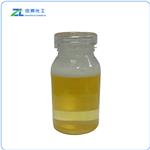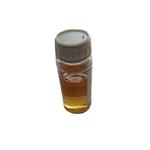2,4-Heptadienal retards or prevents the development of "off-flavors" in auto-oxidizing fats and oils. May be prepared by reduction
with LiAlH4 of the dienoic acid prepared by the Doebner synthesis,
followed by oxidation with Mn02 of the resulting dienol to the
corresponding dienol; by the method of Marshall and Whiting.
2,4-Heptadienal has a fatty, green odor In auto-oxidizing fats and oils, it retards or prevents the development of “off-favors ”.
Reported found as a volatile component in boiled chicken, in peas by enzymatic formation from lipids, as the odorous component in Vaccinium macrocarpon; additional products in which 2,4-heptadienal has been reportedly identifed include soybean oil, black-tea aroma (trans- and cis-form); bilberry aroma (Vaccinium myrtillus); frozen peas, sunfower oil, autooxidized lard, salted salmon, sturgeon caviar and salmon roe; the trans,trans-form has been reported found among the volatile favor components of potato chips and tomato Also reported found in natural sources including cranberry, guava, melon, blackberry, avocado, cabbage, raw or cooked potato, tomato, butter, lean fsh, smoked fsh, chicken fat, cooked chicken, beef fat, tea, cooked beef, lamb and pork, peanut oil, peanut butter, mango, caulifower, broccoli, tamarind, fgs, corn tortillas, lemon balm, oysters, crayfsh, clams, mate and Virginia tobacco
trans,trans-2,4-Heptanedienal is an unsaturated aldehyde that has a fishy odour. trans,trans-2,4-Heptanedienal is a volatile component naturally found in drinking water and fish oils.
ChEBI: A heptadienal in which the two double bonds are located at positions 2 and 4 (the E,E-geoisomer).
Aroma characteristics at 0.10%: green fatty, herbal, vegetative, aldehydic oily with cucumber and fried nuances.
Taste characteristics at 0.25 ppm: green fatty, harsh chicken fat, cucumber with brothy and fshy nuances.
2,4-Heptadienal is a specific marker of oxidative rancidity. It is also a potential algal metabolite.
By reduction with LiAlH4 of the dienoic acid prepared by the Doebner synthesis, followed by oxidation with MnO2 of the resulting dienol to the corresponding dienol; by the method of Marshall and Whiting.



